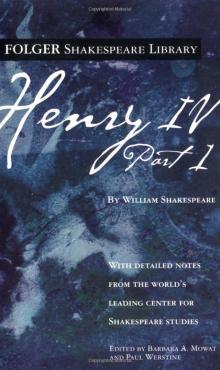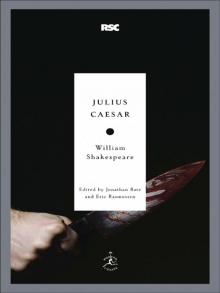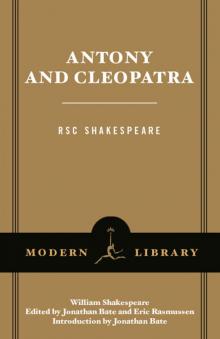- Home
- William Shakespeare
Much Ado About Nothing (Arden Shakespeare: Third Series) Page 6
Much Ado About Nothing (Arden Shakespeare: Third Series) Read online
Page 6
Shakespeare on the Stage
Each volume in the Signet Classic Shakespeare includes a brief stage (and sometimes film) history of the play. When we read about earlier productions, we are likely to find them eccentric, obviously wrongheaded--for instance, Nahum Tate's version of King Lear, with a happy ending, which held the stage for about a century and a half, from the late seventeenth century until the end of the first quarter of the nineteenth. We see engravings of David Garrick, the greatest actor of the eighteenth century, in eighteenth-century garb as King Lear, and we smile, thinking how absurd the production must have been. If we are more thoughtful, we say, with the English novelist L. P. Hartley, "The past is a foreign country: they do things differently there." But if the eighteenth-century staging is a foreign country, what of the plays of the late sixteenth and seventeenth centuries? A foreign language, a foreign theater, a foreign audience.
Probably all viewers of Shakespeare's plays, beginning with Shakespeare himself, at times have been unhappy with the plays on the stage. Consider three comments about production that we find in the plays themselves, which suggest Shakespeare's concerns. The Chorus in Henry V complains that the heroic story cannot possibly be adequately staged: But pardon, gentles all,
The flat unraised spirits that hath dared
On this unworthy scaffold to bring forth
So great an object. Can this cockpit hold
The vasty fields of France? Or may we cram
Within this wooden O the very casques
That did affright the air at Agincourt?
Piece out our imperfections with your thoughts.
(Prologue 1.8-14,23)
Second, here are a few sentences (which may or may not represent Shakespeare's own views) from Hamlet's longish lecture to the players: Speak the speech, I pray you, as I pronounced it to you, trippingly on the tongue. But if you mouth it, as many of our players do, I had as lief the town crier spoke my lines.... O, it offends me to the soul to hear a robustious periwig-pated fellow tear a passion to tatters, to very rags, to split the ears of the groundlings.... And let those that play your clowns speak no more than is set down for them, for there be of them that will themselves laugh, to set on some quantity of barren spectators to laugh too, though in the meantime some necessary question of the play be then to be considered. That's villainous and shows a most pitiful ambition in the fool that uses it. (3.2.1-47)
Finally, we can quote again from the passage cited earlier in this introduction, concerning the boy actors who played the female roles. Cleopatra imagines with horror a theatrical version of her activities with Antony: The quick comedians
Extempomlly will stage us, and present
Our Alexandrian revels: Antony
Shall be brought drunken forth, and I shall see
Some squeaking Cleopatra boy my greatness
I' th' posture of a whore. (5.2.216-21 )
It is impossible to know how much weight to put on such passages--perhaps Shakespeare was just being modest about his theater's abilities--but it is easy enough to think that he was unhappy with some aspects of Elizabethan production. Probably no production can fully satisfy a playwright, and for that matter, few productions can fully satisfy us; we regret this or that cut, this or that way of costuming the play, this or that bit of business.
One's first thought may be this: Why don't they just do "authentic" Shakespeare, "straight" Shakespeare, the play as Shakespeare wrote it? But as we read the plays--words written to be performed--it sometimes becomes clear that we do not know how to perform them. For instance, in Antony and Cleopatra Antony, the Roman general who has succumbed to Cleopatra and to Egyptian ways, says, "The nobleness of life / Is to do thus" (1.1.36-37). But what is "thus"? Does Antony at this point embrace Cleopatra? Does he embrace and kiss her? (There are, by the way, very few scenes of kissing on Shakespeare's stage, possibly because boys played the female roles.) Or does he make a sweeping gesture, indicating the Egyptian way of life?
This is not an isolated example; the plays are filled with lines that call for gestures, but we are not sure what the gestures should be. Interpretation is inevitable. Consider a passage in Hamlet. In 3.1, Polonius persuades his daughter, Ophelia, to talk to Hamlet while Polonius and Claudius eavesdrop. The two men conceal themselves, and Hamlet encounters Ophelia. At 3.1.131 Hamlet suddenly says to her, "Where's your father?" Why does Hamlet, apparently out of nowhere--they have not been talking about Polonius--ask this question? Is this an example of the "antic disposition" (fantastic behavior) that Hamlet earlier (1.5.172) had told Horatio and others--including us--he would display? That is, is the question about the whereabouts of her father a seemingly irrational one, like his earlier question (3.1.103) to Ophelia, "Ha, ha! Are you honest?" Or, on the other hand, has Hamlet (as in many productions) suddenly glimpsed Polonius's foot protruding from beneath a drapery at the rear? That is, does Hamlet ask the question because he has suddenly seen something suspicious and now is testing Ophelia? (By the way, in productions that do give Hamlet a physical cue, it is almost always Polonius rather than Claudius who provides the clue. This itself is an act of interpretation on the part of the director.) Or (a third possibility) does Hamlet get a clue from Ophelia, who inadvertently betrays the spies by nervously glancing at their place of hiding? This is the interpretation used in the BBC television version, where Ophelia glances in fear toward the hiding place just after Hamlet says "Why wouldst thou be a breeder of sinners?" (121-22). Hamlet, realizing that he is being observed, glances here and there before he asks "Where's your father?" The question thus is a climax to what he has been doing while speaking the preceding lines. Or (a fourth interpretation) does Hamlet suddenly, without the aid of any clue whatsoever, intuitively (insightfully, mysteriously, wonderfully) sense that someone is spying? Directors must decide, of course--and so must readers.
Recall, too, the preceding discussion of the texts of the plays, which argued that the texts--though they seem to be before us in permanent black on white--are unstable. The Signet text of Hamlet, which draws on the Second Quarto (1604) and the First Folio (1623) is considerably longer than any version staged in Shakespeare's time. Our version, even if spoken very briskly and played without any intermission, would take close to four hours, far beyond "the two hours' traffic of our stage" mentioned in the Prologue to Romeo and Juliet. (There are a few contemporary references to the duration of a play, but none mentions more than three hours.) Of Shakespeare's plays, only The Comedy of Errors, Macbeth, and The Tempest can be done in less than three hours without cutting. And even if we take a play that exists only in a short text, Macbeth, we cannot claim that we are experiencing the very play that Shakespeare conceived, partly because some of the Witches' songs almost surely are non-Shakespearean additions, and partly because we are not willing to watch the play performed without an intermission and with boys in the female roles.
Further, as the earlier discussion of costumes mentioned, the plays apparently were given chiefly in contemporary, that is, in Elizabethan dress. If today we give them in the costumes that Shakespeare probably saw, the plays seem not contemporary but curiously dated. Yet if we use our own dress, we find lines of dialogue that are at odds with what we see; we may feel that the language, so clearly not our own, is inappropriate coming out of people in today's dress. A common solution, incidentally, has been to set the plays in the nineteenth century, on the grounds that this attractively distances the plays (gives them a degree of foreignness, allowing for interesting costumes) and yet doesn't put them into a museum world of Elizabethan England.
Inevitably our productions are adaptations, our adaptations, and inevitably they will look dated, not in a century but in twenty years, or perhaps even in a decade. Still, we cannot escape from our own conceptions. As the director Peter Brook has said, in The Empty Space (1968): It is not only the hairstyles, costumes and makeups that look dated. All the different elements of staging--the shorthands of behavior that stand for emotions; gestures, gesticu
lations and tones of voice--are all fluctuating on an invisible stock exchange all the time.... A living theatre that thinks it can stand aloof from anything as trivial as fashion will wilt. (p. 16)
As Brook indicates, it is through today's hairstyles, costumes, makeup, gestures, gesticulations, tones of voice--this includes our conception of earlier hairstyles, costumes, and so forth if we stage the play in a period other than our own--that we inevitably stage the plays.
It is a truism that every age invents its own Shakespeare, just as, for instance, every age has invented its own classical world. Our view of ancient Greece, a slave-holding society in which even free Athenian women were severely circumscribed, does not much resemble the Victorians' view of ancient Greece as a glorious democracy, just as, perhaps, our view of Victorianism itself does not much resemble theirs. We cannot claim that the Shakespeare on our stage is the true Shakespeare, but in our stage productions we find a Shakespeare that speaks to us, a Shakespeare that our ancestors doubtless did not know but one that seems to us to be the true Shakespeare--at least for a while.
Our age is remarkable for the wide variety of kinds of staging that it uses for Shakespeare, but one development deserves special mention. This is the now common practice of race-blind or color-blind or nontraditional casting, which allows persons who are not white to play in Shakespeare. Previously blacks performing in Shakespeare were limited to a mere three roles, Othello, Aaron (in Titus Andronicus), and the Prince of Morocco (in The Merchant of Venice), and there were no roles at all for Asians. Indeed, African-Americans rarely could play even one of these three roles, since they were not welcome in white companies. Ira Aldridge (c.1806-1867), a black actor of undoubted talent, was forced to make his living by performing Shakespeare in England and in Europe, where he could play not only Othello but also--in whiteface--other tragic roles such as King Lear. Paul Robeson (1898-1976) made theatrical history when he played Othello in London in 1930, and there was some talk about bringing the production to the United States, but there was more talk about whether American audiences would tolerate the sight of a black man--a real black man, not a white man in blackface--kissing and then killing a white woman. The idea was tried out in summer stock in 1942, the reviews were enthusiastic, and in the following year Robeson opened on Broadway in a production that ran an astounding 296 performances. An occasional all-black company sometimes performed Shakespeare's plays, but otherwise blacks (and other minority members) were in effect shut out from performing Shakespeare. Only since about 1970 has it been common for nonwhites to play major roles along with whites. Thus, in a 1996-97 production of Antony and Cleopatra, a white Cleopatra, Vanessa Red-grave, played opposite a black Antony, David Harewood. Multiracial casting is now especially common at the New York Shakespeare Festival, founded in 1954 by Joseph Papp, and in England, where even siblings such as Claudio and Isabella in Measure for Measure or Lear's three daughters may be of different races. Probably most viewers today soon stop worrying about the lack of realism, and move beyond the color of the performers' skin to the quality of the performance.
Nontraditional casting is not only a matter of color or race; it includes sex. In the past, occasionally a distinguished woman of the theater has taken on a male role--Sarah Bern hardt (1844-1923) as Hamlet is perhaps the most famous example--but such performances were widely regarded as eccentric. Although today there have been some performances involving cross-dressing (a drag As You Like It staged by the National Theatre in England in 1966 and in the United States in 1974 has achieved considerable fame in the annals of stage history), what is more interesting is the casting of women in roles that traditionally are male but that need not be. Thus, a 1993-94 English production of Henry V used a woman--not cross-dressed--in the role of the gov emor of Harfleur. According to Peter Holland, who reviewed the production in Shakespeare Survey 48 (1995), "having a female Governor of Harfleur feminized the city and provided a direct response to the horrendous threat of rape and murder that Henry had offered, his language and her body in direct connection and opposition" (p. 210). Ten years from now the device may not play so effectively, but today it speaks to us. Shakespeare, born in the Elizabethan Age, has been dead nearly four hundred years, yet he is, as Ben Jonson said, "not of an age but for all time." We must understand, however, that he is "for all time" precisely because each age finds in his abundance something for itself and something of itself.
And here we come back to two issues discussed earlier in this introduction--the instability of the text and, curiously, the Bacon/Oxford heresy concerning the authorship of the plays. Of course Shakespeare wrote the plays, and we should daily fall on our knees to thank him for them--and yet there is something to the idea that he is not their only author. Every editor, every director and actor, and every reader to some degree shapes them, too, for when we edit, direct, act, or read, we inevitably become Shakespeare's collaborator and re-create the plays. The plays, one might say, are so cunningly contrived that they guide our responses, tell us how we ought to feel, and make a mark on us, but (for better or for worse) we also make a mark on them.
--SYLVAN BARNET
Tufts University
Introduction
Much Ado About Nothing presents an editor with no significant problems as to when it was written, the correctness of the text, the kind of source material that it reanimates and makes into a play. It was published in quarto in 1600, when Shakespeare was thirty-six, with his name on the title page, and was further identified as having been "publicly acted" by the acting company for which he wrote and of which he was a member. The evidence is quite clear that it had been written within a year or a year and a half of its publication (i.e., at about mid point in Shakespeare's career as a dramatist). The text itself is an excellent one, the basis of the posthumous Folio text of 1623, with only a few minor difficulties as to the assignment of lines and as to the intent, here and there, of the original punctuation. The Hero-Claudio-Don John plot, with its lady's maid, caught with her lover, being mistaken for the lady herself, has been traced back to a Greek source of about the year 400. The sixteenth-century Italian collector of tales, Bandello, used the plot in Story XXII of his Novelle (1554), as did Ariosto somewhat earlier in Book V of his Orlando Furioso,1 and as did Spenser in Book II, Canto 4, of the Faerie Queene (1590). Beatrice and Benedick, if one wishes to abstract them from the play to view them in historical context, are part of a battle of the sexes with deep roots in the culture and in the literature of the Western world (as I have tried to demonstrate in The Love-Game Comedy, 1946). Dogberry and Verges have self evident origins in that which they parody.
Much Ado, moreover, has never provoked elaborate critical appraisal, perhaps because it has always seemed serenely self-contained, a comedy that does its work so well when seen on a stage, or when read, that it does not particularly invite extended comment. Its brilliance as a comedy, then (to justify the admirable quietness of its critics), can be briefly verbalized in two interrelated ways. We can describe the dramatic strategies employed in the play, which create its idiosyncratic "tone" as a comedy. We can also try to define the unique identity of Much Ado by an exploration of its substance, the special aspect of existence blocked out for dramatization in the play.
The primary identifying fact about Much Ado, I think, is that it is the most realistic of Shakespeare's love comedies written during the reign of Elizabeth. And it is realistic despite the basic improbability (or conventionality) of Claudio's deception by Don John. It abandons completely the romantic landscape, the romantic disguisings, the romantic dialogue of Portia's and Bassanio's Belmont, of Rosalind's and Orlando's Forest of Arden, of Viola's and Duke Orsino's Illyria. In Much Ado we enter a dramatic world created in very close imitation of the habitable one we know outside the theater.
From its very beginning, the play forces this real world upon us. Its characters are a small group of aristocrats who have all known each other a long time and who are introduced to us, in 1.1, talking about each other
on the basis of old familiarity. Hero, for example, recognizes at once Beatrice's oblique reference to Benedick as "Signior Mountanto." Beatrice, we are to understand, has taunted Benedick's valor sometime before the immediate moments of the play and remembers that she has promised "to eat all of his killing" in the wars that have just concluded. She has also previously ridiculed his pretensions as a lover. She recalls: "He set up his bills here in Messina and challenged Cupid at the flight." Leonato refers easily to the long-standing "merry war betwixt Signior Benedick" and Beatrice. Claudio confesses to earlier amorous thoughts about Hero before he went off to the "rougher task" of the wars. Even Don John (1.3) has already been sufficiently irritated by the "exquisite" Claudio to abhor the elegance of this "very forward March-chick," this "start-up," and to be "sick in displeasure to him" (2.2).
Our sense of the close approximation of Much Ado to an actual social world is further enhanced by a certain casualness and easiness in the confrontations of one character with another. In this respect, and scene by scene, Much Ado is more like Hamlet, for example, than it is like As You Like It or Twelfth Night. The first and the last scene in the play are perhaps the most brilliant illustrations of this casualness, this incredible ease with which characters react to each other. But it is an ease that is completely sustained as "tone" or manner throughout the play. One finds it in Don Pedro's and in Benedick's teasing of Balthasar, for example, for his reluctance to sing in front of them (2.3). It is the element which gives credibility to Borachio's rambling discourse to Conrade on fashion (3.3). It is what makes Benedick's sudden playing the role of schoolteacher and grammarian ("How now? Interjections?") in the church scene (4.1) so believable and so desperately ironic. It is what makes so devastating the unexpected and embarrassed encounter that Don Pedro and Claudio have with Leonato and Antonio after the disgracing of Hero (5. 1).

 Romeo and Juliet
Romeo and Juliet As You Like It (Folger Shakespeare Library)
As You Like It (Folger Shakespeare Library) Hamlet
Hamlet Richard II (Folger Shakespeare Library)
Richard II (Folger Shakespeare Library) Macbeth
Macbeth Henry V
Henry V The Winter's Tale
The Winter's Tale The Taming of the Shrew
The Taming of the Shrew The Comedy of Errors
The Comedy of Errors King Lear (Folger Shakespeare Library)
King Lear (Folger Shakespeare Library) Twelfth Night
Twelfth Night Othello
Othello The Two Gentlemen of Verona
The Two Gentlemen of Verona Henry IV, Part 1 (Folger Shakespeare Library)
Henry IV, Part 1 (Folger Shakespeare Library) King John/Henry VIII (Signet Classics)
King John/Henry VIII (Signet Classics) The Tempest
The Tempest Titus Andronicus (Dover Publications)
Titus Andronicus (Dover Publications) A Midsummer Night's Dream
A Midsummer Night's Dream Antony and Cleopatra (Arden Shakespeare: Third Series)
Antony and Cleopatra (Arden Shakespeare: Third Series) The Oxford Shakespeare: Henry IV, Part 2 (Oxford World's Classics)
The Oxford Shakespeare: Henry IV, Part 2 (Oxford World's Classics) Much Ado About Nothing (Arden Shakespeare: Third Series)
Much Ado About Nothing (Arden Shakespeare: Third Series) All's Well That Ends Well
All's Well That Ends Well Titus Andronicus & Timon of Athens
Titus Andronicus & Timon of Athens Richard III (Modern Library Classics)
Richard III (Modern Library Classics) Coriolanus
Coriolanus srsly Hamlet (OMG Shakespeare)
srsly Hamlet (OMG Shakespeare) The Merchant of Venice
The Merchant of Venice Richard III
Richard III Richard II
Richard II Pericles
Pericles As You Like It
As You Like It Cymbeline
Cymbeline Alls Wel that ends Well
Alls Wel that ends Well YOLO Juliet
YOLO Juliet A Midsummer Night #nofilter
A Midsummer Night #nofilter Love's Labour's Lost
Love's Labour's Lost Much Ado About Nothing
Much Ado About Nothing Romeo & Juliet & Vampires
Romeo & Juliet & Vampires The Arden Shakespeare Complete Works
The Arden Shakespeare Complete Works Julius Caesar
Julius Caesar Five Revenge Tragedies: The Spanish Tragedy, Hamlet, Antonio's Revenge, The Tragedy of Hoffman, The Revenger's Tragedy (Penguin Classics)
Five Revenge Tragedies: The Spanish Tragedy, Hamlet, Antonio's Revenge, The Tragedy of Hoffman, The Revenger's Tragedy (Penguin Classics) Macbeth #killingit
Macbeth #killingit The Oxford Shakespeare: The Complete Works
The Oxford Shakespeare: The Complete Works Hamlet, Prince of Denmark (Collins edition)
Hamlet, Prince of Denmark (Collins edition) King John & Henry VIII
King John & Henry VIII Henry IV, Part 2
Henry IV, Part 2 Complete Plays, The
Complete Plays, The The Sonnets and Other Poems
The Sonnets and Other Poems Antony and Cleopatra
Antony and Cleopatra Henry IV, Part 1
Henry IV, Part 1 Is This a Dagger Which I See Before Me?
Is This a Dagger Which I See Before Me? The Complete Works of William Shakespeare In Plain and Simple English (Translated)
The Complete Works of William Shakespeare In Plain and Simple English (Translated) The Sonnets
The Sonnets